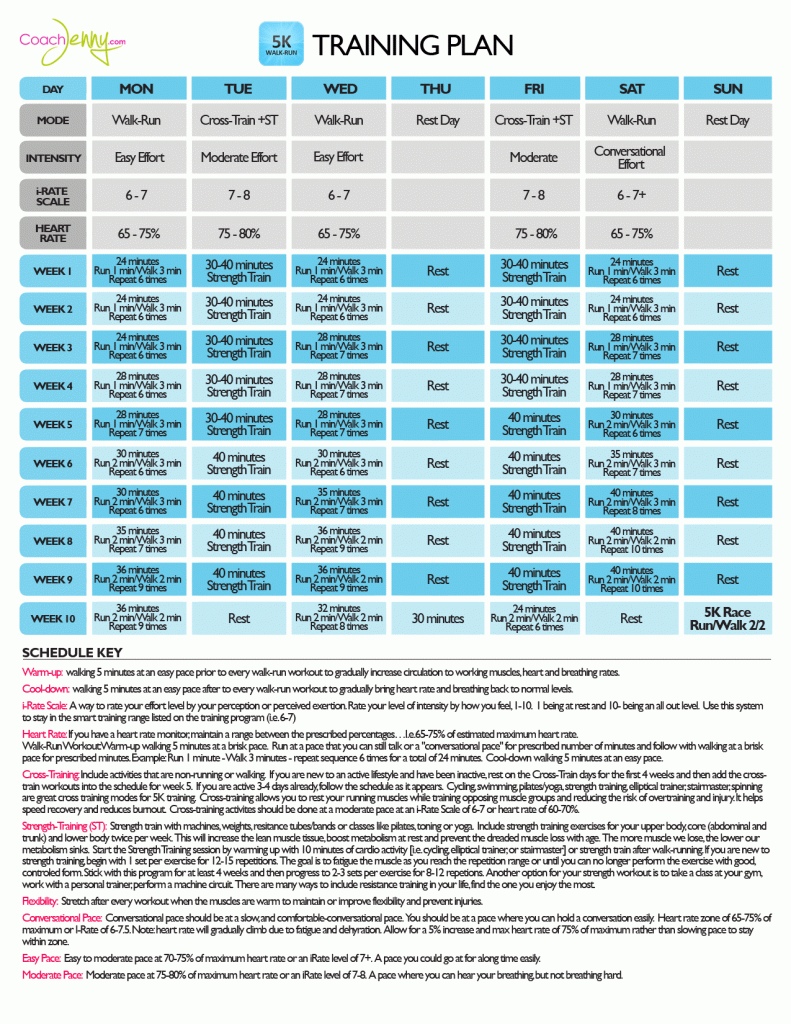

This begs the question: can we all be successful like Kevin?! Now Kevin has his sights set on the next goal: a marathon that’s nearly a half hour faster than what he ran last year.

I believe that if I continue with program it will get me a 3:15 or faster next year. What’s even more exciting is that Kevin now has the confidence to think boldly about the future: He also lost ten pounds, gained more definition, and ran a half marathon PR too. In just a few months, Kevin set multiple, massive marathon Personal Bests. Then, I used a modified version to get ready for a half marathon in September and achieved another PB of 1:38.

I was over-the-moon happy about my results and attribute this improvement to the strength training program. I dropped about eleven minutes from my previous marathon only four months before. So, twice per week to the gym with a plan. The program tapered at the end, which was great. The program was easy to follow and I planned it around my marathon in June. Soon, Kevin was able to put his strength training program to the test: The steely-eyed focus of a marathon runner Let’s see what a strength training program for marathoners could actually do.

After all, if you look great but run slower, what’s the point? Kevin agreed, noting that he liked his better muscle tone and weight loss.īut what’s more important are your results. I don’t think there’s anything wrong with enjoying how you look when you start getting fit. I even lost ten pounds, which was a surprise to me. I felt stronger and was happy to see a progression to heavier weights. My spaghetti arms began to get some muscle.
Pr running training programs how to#
He realized that he’d never commit because he didn’t know how to create a strength training for marathon runners program. Kevin decided to invest in a Strength Running weightlifting program. If Kevin has spaghetti arms, Jason must have two-dimensional arms There’s always a lot of interest in the high level concept of strength training for marathon runners but knowing where to start can be difficult.Īt Strength Running, we’ve made things simple so you can focus on training (not building your training). I’ve found that this is one of the biggest hurdles for runners to clear before they start strength training. I knew that weight lifting would be a useful tool but didn’t really know where to start. I had been running for about four years but my progression to a faster marathon was moving very slowly. What I had been aiming for was around a 3:30 marathon, or better. I ran a 3:43 marathon followed four months later by a 3:41 marathon. If you’re like me, you need to be repeatedly reminded of the benefits of strength training… He knew it would be useful but wasn’t sure where to start. Kevin was like most of us: he loves running but was skeptical of lifting weights. “I didn’t know where to start with weightlifting”Ī post shared by Jason Fitzgerald on at 6:01am PDT Just like Kevin, a runner who finally made the commitment. “I didn’t carve out the time and didn’t know where to start! Finally got injured and had to cut back on running, so I figured it out and now I love it!” – Mollyīut once we avoid weightlifting mistakes and recognize strength training’s benefits, we’re ready to start running healthier and far more explosively. Some runners also learn the hard way that skipping weight training is a risky choice. But lifting weights would give him the strength and power to be less tired after his run! Just the other day a runner told me he was “too tired after his run” for strength training. Without those skills, a runner’s progress is stunted. It gives you armor that protects you from the stress of running.Īnd just like in football, strength training gives runners higher levels of athleticism, strength, coordination, speed, and power. Strength training toughens the muscles, tendons, ligaments, bones, and connective tissues. It shouldn’t be surprising that running has such a high injury rate. Every footstep sends an impact force about 2-5 times your bodyweight up your legs. In football, you’re getting slammed into the ground after being tackled by other players.īut in running, you’re hitting yourself. Kevin enjoying the fruits of his strength training effortsīoth football and running are impact sports. But for some reason, many runners think it’s perfectly fine to skip their own strength work. Can you imagine a football player who did no strength training? It’s hard to imagine.


 0 kommentar(er)
0 kommentar(er)
